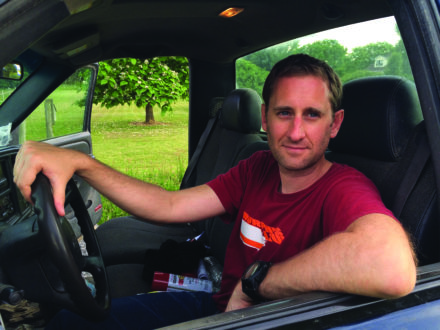

Sep 20, 201820-year study examines yields of high-density orchards
A Cornell University study shows the long-term effectiveness of planting high-density orchards.
Gala, Fuji, Empire and McIntosh apples were planted in 1997 at the New York State Agricultural Experiment Station, located near Geneva.


Jaume Lordan Sanahuja, who recently left Cornell for a job in his homeland of Catalonia, Spain at the Institute for Food and Agricultural Research and Technology there, was the lead author of a report updating the results of a study designed by Cornell’s Terence L. Robinson.
Sanahuja’s article about the long-term effects of tree density and tree shape on apple orchard performance was published in the August edition of the Scientia Horticulturae. His article focused on an agronomic analysis of the 20 years of results, while a follow-up article will analyze the economics of the results.
There’s no one-size-fits-all approach for planting orchards, the agronomics study showed.
“There is an optimum planting density for each variety. The higher the density the better is not true for all the varieties,” Sanahuja said. “In addition, the conic (cone-shaped) tree shapes did better than V shapes in general. While V tree shapes had more light interception, conic shapes seem to have a better efficiency converting intercepted energy into yield.”
Fuji and Gala apples performed well in high-density plantings, performing best when pruned to conic tree shapes, sometimes called tall spindle shapes, as opposed to V shapes. Empire and McIntosh, though, were not as friendly to high-density plantings, with McIntosh’s highest yields coming at about 3,500 trees per hectare with conical pruning.
“With some varieties, it is possible that very high-density systems would only have potential when orchard lifespan is short or when fruit prices are very high during the early years of an orchard life,” Sanahuja said.
While the V-shaped trees absorbed more light, they were less efficient at converting the energy into fruit.
“Although increased planting density improved light interception and thus resulted in increased yield, it decreased tree partitioning; a greater fraction of the tree’s photosynthate was allocated to vegetative growth compared to fruiting,” Sanahuja said.
The strength of the study is that it was conducted over 20 years’ time. Sanahuja credited Robinson for designing the study, and New York growers for supporting it.
“While some studies tend to estimate future production and behavior once the orchard has reached maturity, we observed considerable productivity pattern shifts throughout the orchard life that may have an important effect on the final orchard profitability,” Sanahuja said. “The fast-paced world we live in and the need in research to get a high number of publications, make this kind of study, which requires long-time assessments and a lot of input, to not be very common and attractive.”
At the same time, the study in some ways was limited by the apple varieties and rootstocks planted 20 years ago, and the pruning techniques used over 20 years on the trees.
“Planting density showed a negative effect on fruit color and has implications for crop value and economic profitability,” Sanahuja said. “However, new cultivar strains that color better, or even the increased yield of higher planting densities, could offset that negative consequence.”
The study showed that with M.9 rootstock there is a large range of manageable tree densities. However, he added, “a group of new rootstocks such as the Geneva series are currently available, that can influence scion behavior, and potentially reduce the high pruning demand required with high-density plantings.”
While Cornell’s study seems to support pruning for conical or tall-spindle tree shapes, new types of tree structures have since been advanced by researchers. One of the newer techniques is bi-axis, which creates a flat, narrow canopy.


Stefano Musacchi, professor and endowed chair-tree fruit physiology and management at Washington State University (WSU) now advocates for the bi-axis as an approach for reducing vigor in dense plantings.
“This training system is suitable for the mechanization of several field operations like pruning, thinning and harvest,” he said. “In fact, dividing the vigor between two axes presents the undeniable advantage of better control of the vegetative growth. This system doubles the number of shoots and reduces their length to half in comparison with spindle trees planted at the same distance. This vigor control results in a reduction in pruning time. The reduced tree spacing and tree height allow optimization of the distribution of fruit in the canopy with a positive effect of fruit quality. Fruit distribution at the top of the tree is similar to that at the bottom of the tree resulting in more fruit being exposed to the light, which assures good red color development in bi-colored varieties.”
Musacchi continues to study the bi-axis approach at WSU’s Tree Fruit Research and Extension Center, Sunrise Research Orchard.
But Musacchi said Sanahuja’s study showed that, for growers, it’s no longer just about the number of apples they can produce, but the quality of those apples.
“Improving fruit quality is the new frontier of research,” Musacchi said. “After years where the first goal was increasing yield, maintaining consistent and good quality will be the new driver of research. Actually, there are a lot of new apple cultivars with high-quality standard and good eating taste.”
– Stephen Kloosterman, FGN Associate Editor
Top photo: From left, Cornell University research support specialist Peter Herzeele is joined by crew members Pete, Jose and Luis as part of Terrence L. Robinson’s research on high-density orchards. Photos: Cornell University.














